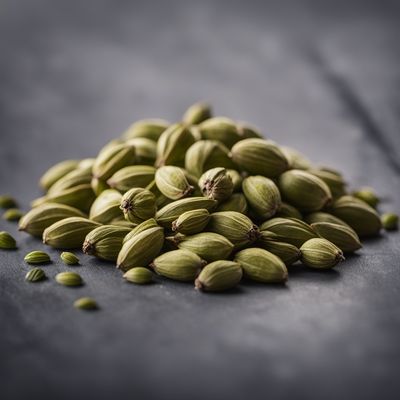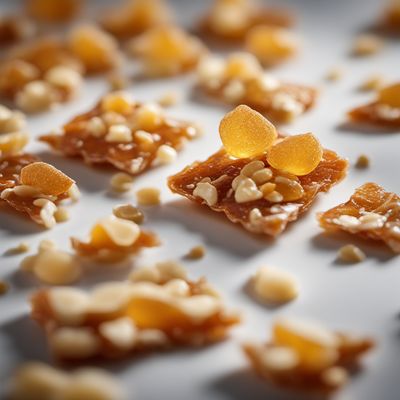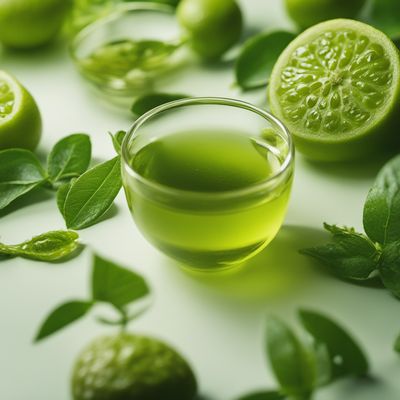
Ingredient
Wasabi flavour
"The Fiery Elixir: Unleashing the Power of Wasabi Flavour"
Known for its vibrant green color and intense heat, wasabi flavour is derived from the root of the Wasabia japonica plant. It has a distinct taste that is both spicy and slightly sweet, with a lingering heat that stimulates the senses. The texture of wasabi flavour can vary depending on its form, ranging from a smooth paste to a coarse powder. Its appearance is characterized by its bright green hue, which adds visual appeal to any dish.
Origins and history
Wasabi flavour originated in Japan, where it has been cultivated for centuries. It is primarily grown in the mountainous regions of Japan, where the cool and shaded conditions provide the ideal environment for its growth. Historically, wasabi was highly valued and used as a medicinal plant due to its antibacterial properties. Over time, it became a staple in Japanese cuisine and gained popularity worldwide.
Nutritional information
Wasabi flavour is low in calories and fat, making it a healthy addition to meals. It is a good source of vitamin C, dietary fiber, and antioxidants, which contribute to its potential health benefits.
Allergens
Wasabi flavour may cause allergic reactions in individuals who are sensitive to mustard or horseradish, as it belongs to the same family of plants.
How to select
When selecting wasabi flavour, opt for fresh or high-quality products. Look for vibrant green color and avoid any signs of discoloration or dryness. If purchasing wasabi paste, choose reputable brands that use real wasabi root rather than artificial substitutes.
Storage recommendations
To maintain the freshness of wasabi flavour, store it in an airtight container in the refrigerator. It is recommended to wrap the paste tightly with plastic wrap to prevent oxidation. Wasabi powder should be stored in a cool, dark place to preserve its flavor.
How to produce
Growing wasabi flavour at home can be challenging due to its specific requirements. It thrives in cool, shaded areas with moist soil. It is best to purchase wasabi plants or rhizomes from specialized nurseries and follow their cultivation instructions.
Preparation tips
To prepare wasabi flavour, mix wasabi powder with a small amount of water to form a paste. Allow it to sit for a few minutes to develop its full flavor. Wasabi paste can be used as a condiment for sushi, sashimi, or as a flavoring in sauces and dressings. It is important to use wasabi sparingly, as its heat can be overpowering. For a milder taste, mix wasabi with soy sauce or mayonnaise.
Substitutions
Horseradish can be used as a substitute for wasabi flavour, as it shares a similar spicy heat. However, it lacks the subtle sweetness and complexity of true wasabi.
Culinary uses
Wasabi flavour is commonly used in Japanese cuisine, particularly as a condiment for sushi and sashimi. It adds a burst of heat and flavor to soy sauce, enhancing the overall dining experience. Wasabi can also be incorporated into dressings, marinades, and mayonnaise to give a spicy twist to various dishes.
Availability
Wasabi flavour is primarily cultivated in Japan, but it is also grown in other countries with suitable climates, such as New Zealand and the United States.
More ingredients from this category » Browse all

Rose flavour
The Enchanting Essence of Roses

Anise flavour
Anise: The Licorice-Like Aromatic Herb

Cardamom flavour
"The Enchanting Essence: Unveiling the Magic of Cardamom Flavor"

Wild strawberry flavour
The Essence of Wild Delight

Grenadine flavour
The Essence of Grenadine

Soup flavour
The Secret to Savory Soups

Prune flavour
The Rich and Velvety Prune Flavor

Apricot flavour
"The Essence of Sun-Ripened Apricots: Exploring the Delightful Apricot Flavour"

Exotic fruit flavour
The Enigmatic Essence of Exotic Fruits

Brittle flavour
The Delightful Crunch: Exploring the World of Brittle Flavor

Tequila flavour
The Spirit of Agave

Green tea flavour
The Elixir of Serenity